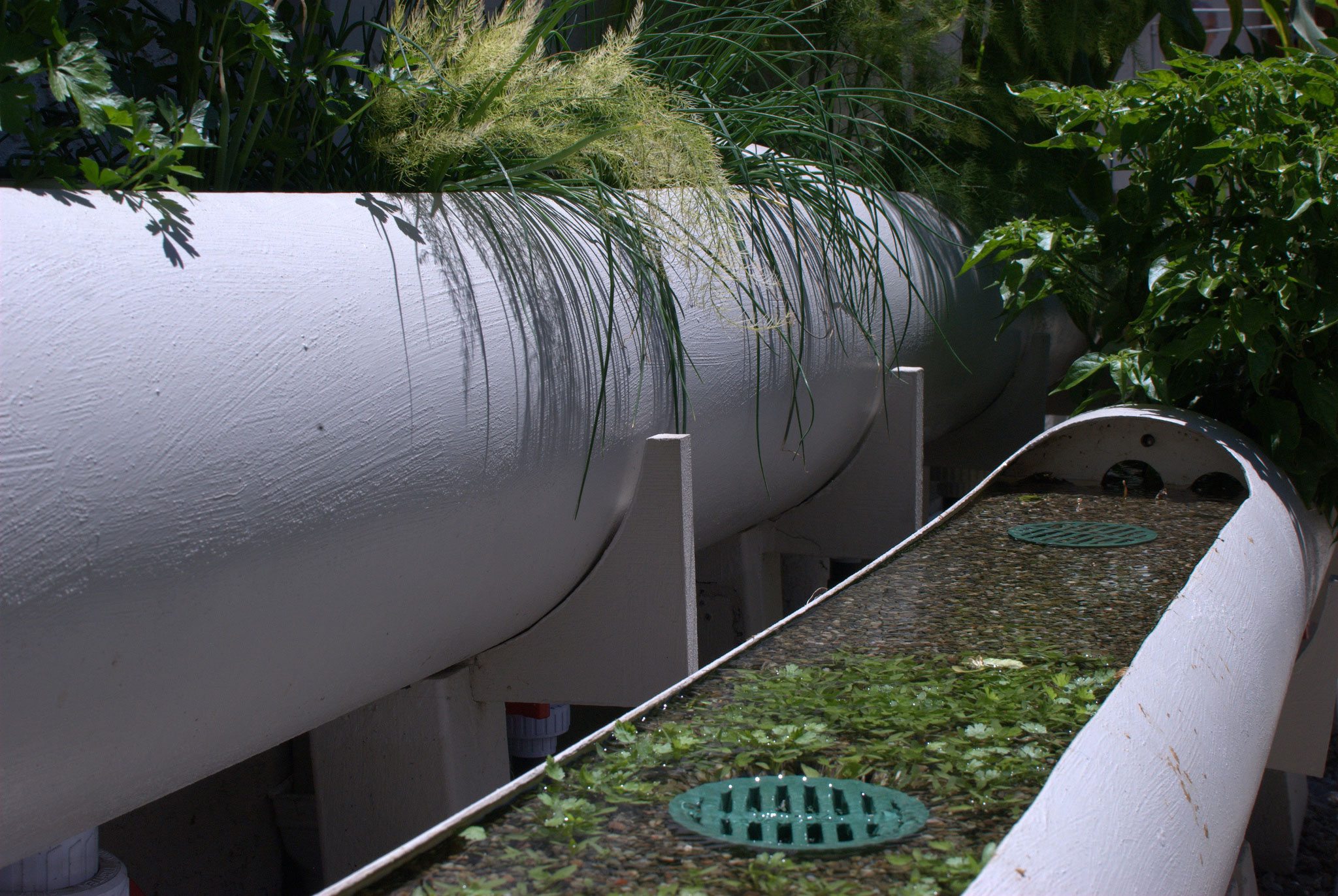Aquaponics How To - Information On Backyard Aquaponic Gardens

With our ever increasing need to find solutions to environmental concerns, aquaponic gardens serve as a sustainable model of food production. Let's learn more about aquaponic plant growing.
What is Aquaponics?
A fascinating subject with a myriad of dizzying information, the topic of “what is aquaponics” can most simply be described as hydroponics combined with aquaculture. With adherence to the following practices, aquaponic systems may very well be a solution to hunger, conserving resources, and eliminating contaminants such as pesticides or other chemicals from entering waterways or aquafers in an environmentally friendly manner and conserving water resources. The premise for aquaponic plant growing it to utilize the waste products of one biological system to serve as the nutrients for a second system incorporating fish and plants to create a new poly-culture, which serves to stimulate production and increase diversity. Simply put, water is re-filtered or circulated to enable the production of fresh veggies and fish --a genius solution for arid regions or farms with limited irrigation.
Aquaponic Plant Growing Systems
The following is a list of various types of aquaponic systems available to the home gardener:
- Media based grow bed
- Growing power system
- Raft system
- Nutrient Film technique (NFT)
- Towers or Vertigro
The choice you make when opting for one of these systems is dependent on your space, knowledge, and cost factors.
Aquaponics How To Guide
While aquaponic systems are increasingly being introduced into “third world” countries with limited economic and environmental resources, it is a fine idea for the home gardener…and lots of fun. First, consider making and acquiring a list of components you will need:
- a fish tank
- a place to grow plants
- water pump(s)
- air pump
- irrigation tubing
- water heater (optional)
- filtration (optional)
- grow light
- fish and plants
When we say aquarium, it can be small like a stock tank, half barrel, or rubber made container to medium sized such as IBC totes, bath tubs, plastic, steel, or fiberglass stock tanks. You could even build your own outdoor pond. For larger fish spaces, large stock tanks or swimming pools will suffice or use your imagination. You will want to make sure that all the items are safe for both fish and humans. The following are items you will most likely use in the creation of an aquaponic garden:
- Polypropylene labeled PP
- high density polyethylene labeled HDPE
- high impact ABS (Hydroponic grow trays)
- stainless steel barrels
- either EPDM or PVC pond liner that is UV resistant and NOT fire retardant (may be toxic)
- fiberglass tanks and grow beds
- rigid white PVC pipe and fitting
- black flexible PVC tubing --do not use copper, which is toxic to the fish
You will first want to decide what type and size system you want and draw up designs and/or research plans and where to get parts. Then purchase and assemble the components. Either start your plant seeds or obtain seedlings for the aquaponic garden. Fill the system with water and circulate for at least a week, then add the fish at about 20% stocking density and the plants. Monitor the water quality and keep up on maintenance of the water garden. Many resources are available online for purveying or consultation when aquaponic plant growing. Of course, you may even decide to omit the fish; but why, when fish are so much fun to watch! Regardless of your choice, the benefits of growing plants in this manner are many:
Gardening tips, videos, info and more delivered right to your inbox!
Sign up for the Gardening Know How newsletter today and receive a free copy of our e-book "How to Grow Delicious Tomatoes".
- Nutrients are continually provided
- There is no weed competition
- Warm water bathing the roots stimulates growth
- Plants expend less energy searching for water or food (allowing it to utilize all that energy into growth)
Do some research and have fun with your aquaponic garden.

Amy Grant has been gardening for 30 years and writing for 15. A professional chef and caterer, Amy's area of expertise is culinary gardening.
-
 Looking For Plants To Give You The Soft And Fuzzies? Try These 5 Fuzzy Leaf Plant Options
Looking For Plants To Give You The Soft And Fuzzies? Try These 5 Fuzzy Leaf Plant OptionsLovers of texture, drama, silver foliage and tactile plants will adore these special sensory garden additions. These fuzzy leaf plant options will leave you all aglow
By Susan Albert
-
 Get Ready For A Summer Of Hummers! Grow These Full Sun Hummingbird Plants and Flowers
Get Ready For A Summer Of Hummers! Grow These Full Sun Hummingbird Plants and FlowersIf you’re lucky enough to enjoy a sunny backyard, make sure you are maxing out on your pollinator opportunities and grow these full sun hummingbird plants and flowers
By Tonya Barnett